Today we’re looking at the Safari 2020 weasel, part of their North American Wildlife Collection. Safari’s website doesn’t specify the species, just that it belongs to the Mustela genus. The Mustela genus contains about 18 species, including the domestic ferret, European mink, stoats, and the least weasel…the smallest member of Carnivora. With its proportionally long tail the Safari weasel can be confidently identified as a long-tailed weasel (Neogale frenata) but as you can see, the long-tailed weasel doesn’t belong to the Mustela genus. In 2021 it was reclassified under the genus Neogale, the New World weasels.

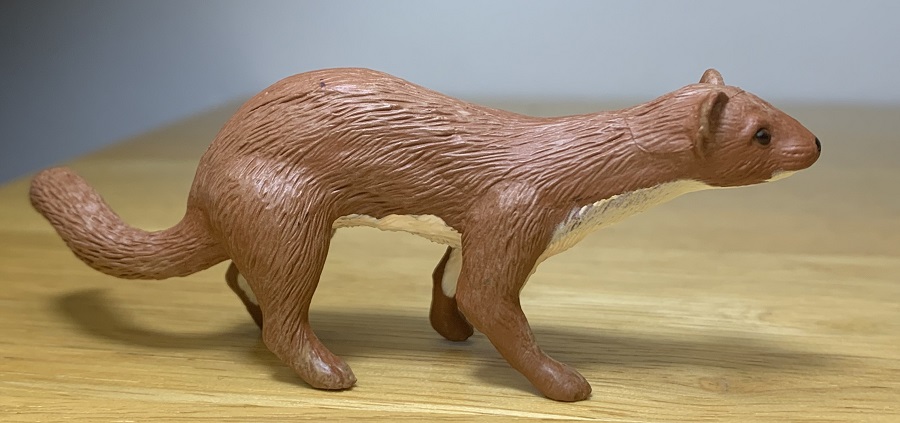
The long-tailed weasel occurs from southern Canada, throughout most of the United States and Central America, and into northern South America in virtually any type of habitat. They generally prey on rodents and other small mammals up to the size of adult rabbits. They’ll also consume various invertebrates, small birds and eggs, reptiles, amphibians, and fish. They subdue their prey by biting and piercing the skull. They’re largely nocturnal but can be active during the day.

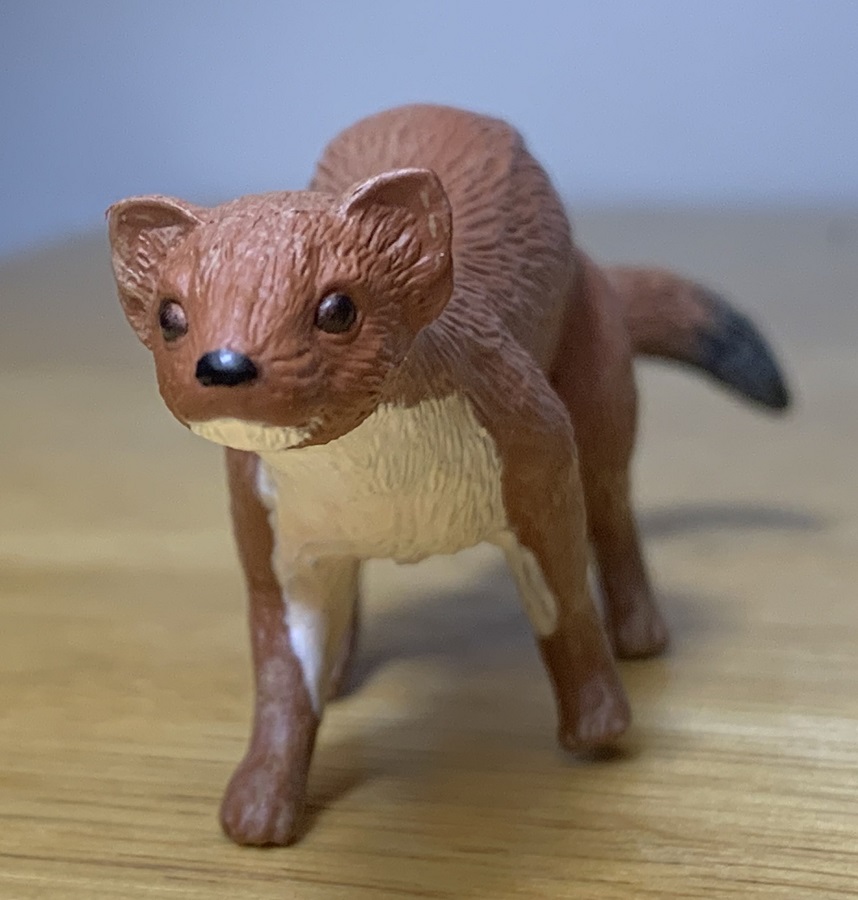
The Safari weasel measures 3.5” in a straight line and has a head-body length of 3” when measured along the curve of its back. Measured along its curves, the tail alone measures about 1.75”. In life the length of the tail is more than 44% the length of the head-body. Long-tailed weasel males have a head-body length of 9-10.5” and females 8-9”. This puts the figure at about 1/3 in scale.
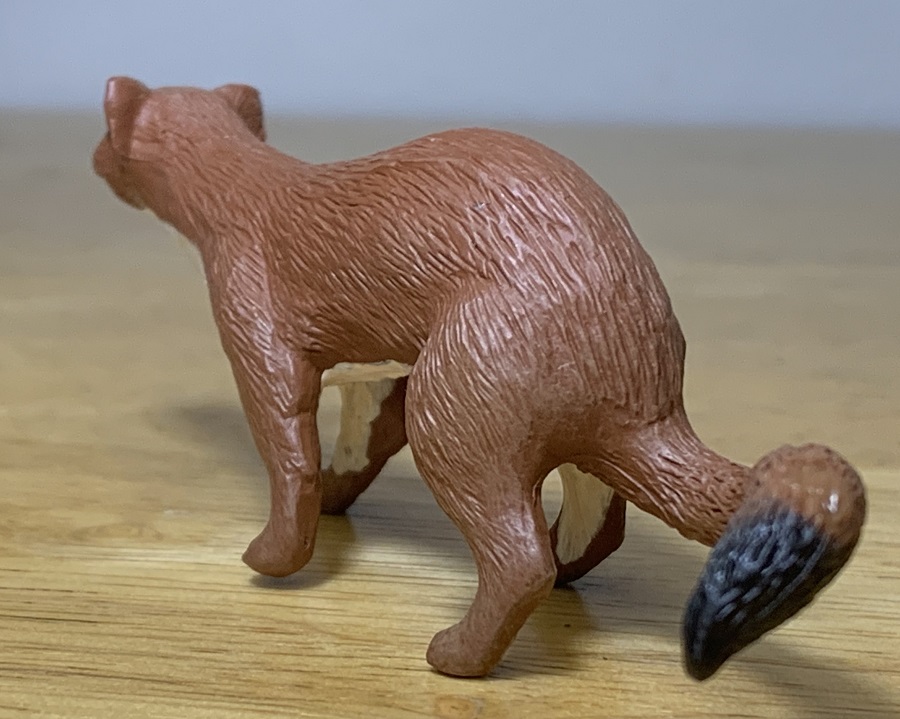
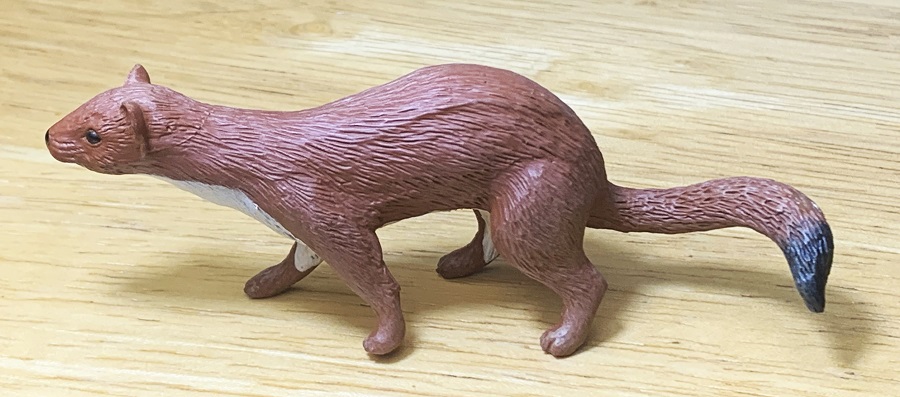
The figure is presented in a striding posture, head lifted high, and back hunched. It looks rather alert and inquisitive, as weasels do. Fine details include fur etched into the figure, distinct digits, and small holes on the muzzle that would anchor the whiskers. The external ear anatomy is of note because it’s so well sculpted as to include the cutaneous marginal pouch, otherwise known as Henry’s pocket. This is a fold of skin that is located on the lower posterior part of the ear. It is present in weasels but if you’ve spent any time with domestic cats, you’ve likely noticed it on them as well. Its function is unknown, but it might help detect high pitched sounds. Anyway, it’s neat that it’s visible on this little figure.

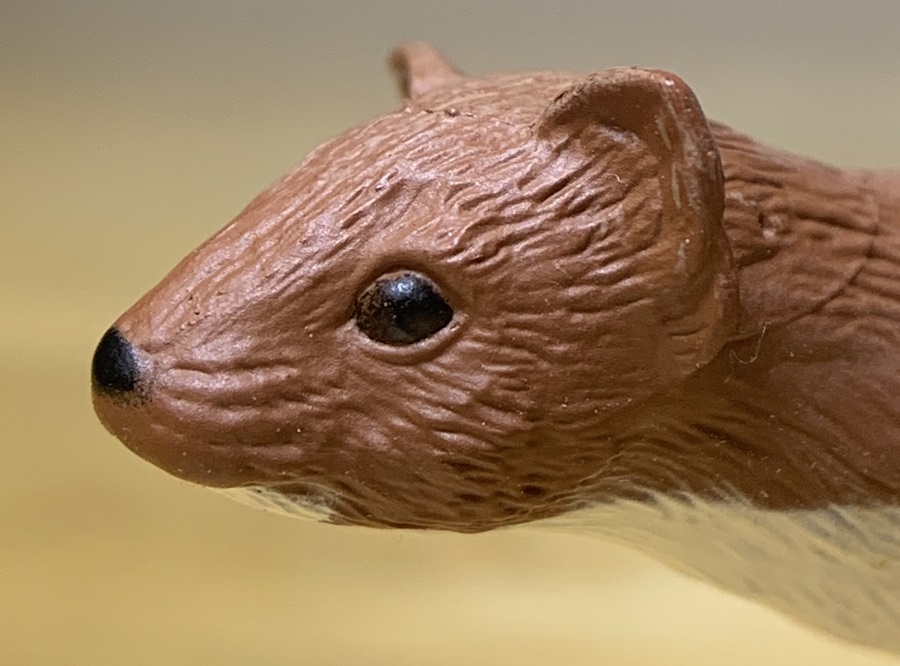
The figure is painted brown with the underside and inside of the limbs white. On the similar short-tailed weasel (Mustela erminea) the white on the hindlegs would extend down onto the feet. The tail is tipped in black. During the winter months northern populations of long-tailed weasels possess a white coat but retain the black tipped tail. The eyes and nose are painted black.
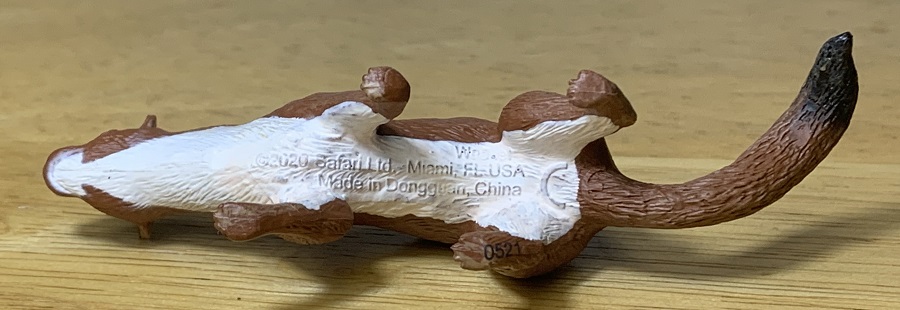

The Safari long-tailed weasel is a fantastic little figure and the sole representative of its species. Tracking one down should be easy for the time being but with it now being discontinued it will only become harder to find in the future. For the moment it retails for less than $5. Get it while you can!
Disclaimer: links to Ebay and Amazon on the AnimalToyBlog are affiliate links, so we make a small commission if you use them. Thanks for supporting us!




Yes!!! I have been looking forward to a review of this figure for a while. When you said you purchased it and it would be a review I was hoping it would be one coming up sooner!
I love this figure and would have reviewed it myself, but I don’t know a lot about mustelids and wouldn’t have done the review justice.
It’s one of the ones I was most excited to review, I enjoy writing about local animals. I’m not sure that I know much more about mustelids than you do but I think I managed alright. I usually research animals as I review them. In this case my Peterson Field Guide to Mammals was particularly useful.
A delightful little figure. I have a soft spot for mustelids, so I’m glad I picked this one up!